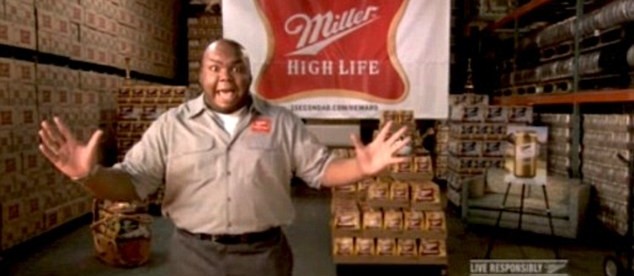The Super Bowl Commercial Designed To Be Missed

This Sunday, millions of people around the world will tune in to watch the New England Patriots and Atlanta Falcons play a game of football. Some of those watching will be interested in Tom Brady and Matt Ryan; many others will have no idea what that means. That latter group is near the TV because the Super Bowl is a great excuse for a party — and, in a weird cultural twist, they’re there to watch the TV commercials.
Over the past few decades, there’s been an arms race of sorts, with brands trying to outcompete one another for the most memorable Super Bowl ad. This has been great for the game’s broadcaster, as the demand for a 30-second commercial spot is through the roof; in 2009, for example, such an ad fetched NBC approximately $2.5 million. And yet that didn’t stop advertisers from coming — in fact, many were very pleased to point out how much ad space they bought. Beer giant Anheuser-Busch (“A-B”), for example, had four minutes and 30 seconds of commercial time during that Super Bowl. That sounds like a large amount of space (and money) to advertise A-B’s most recognizable product, Budweiser, but it should be no surprise to anyone who regularly watches the game or cares about its ads. And certainly, A-B’s competitors can be included in that group.
Playing Pepsi to Bud’s Coke is Miller, a line of beers which also advertises during the Super Bowl but hardly as notably as A-B. Or, in other words, Miller doesn’t typically buy four minutes and thirty seconds of airtime during the game. To most, this would seem like a disadvantage. But in 2009, Miller decided to turn the tables on the math. Instead of buying a 30-second ad, they tried to buy a 1-second ad. You can watch it here, but if you don’t want to click, the animated gif below should do the job. Just imagine the guy is saying “HIGH LIFE” — the name of Miller’s “premium” brand — in a forceful, almost yelling tone.

If you missed it on-air during the 2009 Super Bowl, you can be forgiven — and not just because it was a one-second ad, and you may have been looking elsewhere during that fleeting moment. As AdAge reported, “the ads didn’t even run in many large markets — including New York, Chicago, and Los Angeles — because NBC directed its owned and operated stations not to run them.” NBC apparently saw the ads as an effort to disparage those advertisers (such as A-B) who were willing to pay millions of dollars for longer, standard-sized ads, which was likely an accurate take by the broadcaster. (If you recall, just a few months earlier, the American economy slipped into the worst recession in a generation; it’s likely that Miller wasn’t comfortable spending a ton of advertising when its consumers were suffering economically.)
The ads ran, therefore, in only a limited number of markets and, again, only for one second. But that was plenty for Miller. The buzz around the ad sparked conversations online, and, again per AdAge, Miller saw results: “sales of High Life popped 8.6% during the week after the Super Bowl vs. the same period a year earlier.”
Bonus fact: You don’t need millions of dollars to run a Super Bowl ad and you don’t need to cut it down to one second, either. You do, however, need to be flexible as to where the ad runs. That’s what tech publication The Verge learned in 2015. The website purchased 30 seconds of airtime but the ad only ran in one market — Helena, Montana (population 30,000). As the Verge notes, there were some other, similarly cheap options: “Tulsa, Oklahoma, for $12,500; Fairbanks, Alaska, for $3,000; and Missoula, Montana, for $2,200.” But Helena won out — it cost them only $700.
From the Archives: Outlasting the Super Bowl: If you don’t care who wins the game on Sunday, here’s a game you can play starting on Sunday.
Related: A book that takes one second to read because every page is blank. (Really. It’s a great gag gift.)
